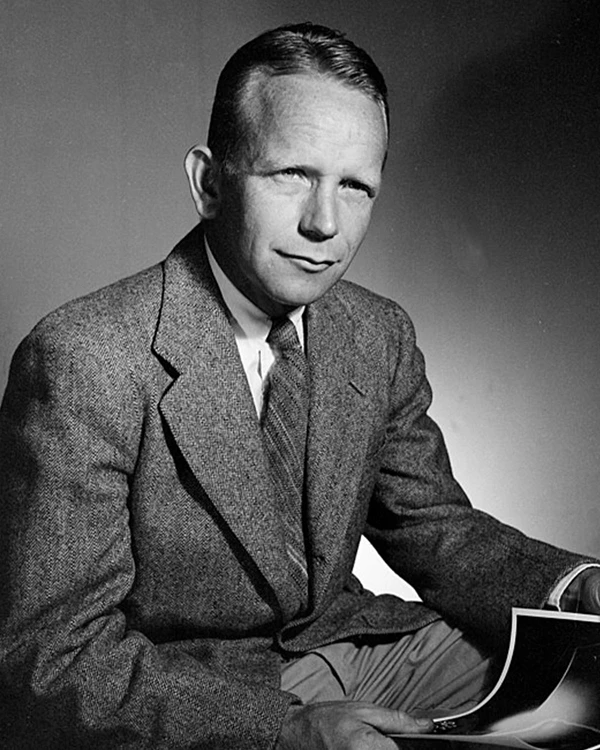Last updated: August 4, 2023
Person
Manhattan Project Scientists: Kenneth Bainbridge

LOS ALAMOS NATIONAL LABORATORY
An interest in ham radio led Kenneth Bainbridge (1904-1996) to enroll in MIT in electrical engineering. He developed an interest in physics and received his PhD from Princeton in 1929. Three years later he had developed a very precise mass spectrometer, which he used to verify Einstein’s famous mass-energy equivalence formula, e=mc2. After spending time at Rutherford’s Cavendish Laboratory in Cambridge, he became an associate professor at Harvard, and in 1940 was recruited to MIT’s Rad Lab for work on high-powered radars for warships. As did others from the Rad Lab, he traveled west in 1943 to the new secret laboratory at Los Alamos. There he initially developed x-ray instrumentation to analyze explosions, but then he was made director of the project preparing the trial of the first atomic bomb – the Trinity Test.
Bainbridge found a suitable location on the Alamogordo Gunnery Range about 200 miles from Los Alamos. His extremely able assistant director, physicist John Williams, led the Services section, and together they arranged for facilities, observation bunkers, hundreds of miles of wiring, miles of paved roads, and everything else needed for the test. After months of military personnel, SEDs, and staff from Los Alamos working in the dust and heat of the New Mexico desert, everything was ready when the bomb components arrived in mid-July, 1945. Just before 5:30 AM on July 16, the “Gadget” successfully detonated, lighting the sky with the first human-made nuclear detonation, “brighter than a thousand suns.” Bainbridge is remembered for commenting to Oppenheimer, “Now we are all sons of bitches” and describing it as a “foul and awesome display.” After the military and scientific dignitaries and the exhausted but relieved Los Alamos scientists departed the Trinity Site, Bainbridge and Williams took a well-deserved day off to go fishing.
After the war, Bainbridge returned to Harvard, where he chaired the Physics Department from 1950 to 1954 and retired in 1975. He became a strong proponent of civilian control of nuclear weapons and a champion of academic freedom, openly opposing the activities of the House Un-American Activities Committee. He was invited to speak all over the world. His son, David, wrote his biography, Game Changer, in 2021.
